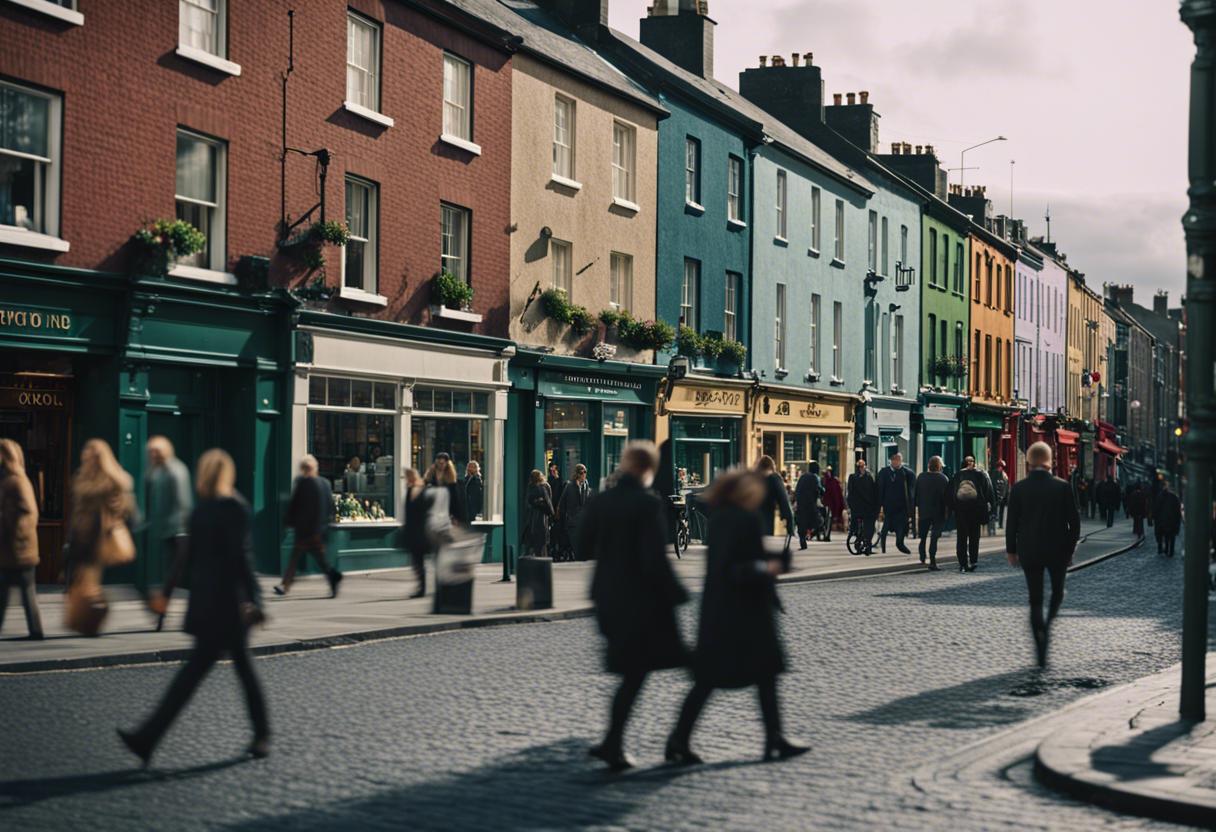Every so often I find myself in certain spots in Dublin, which prompt me to question the dynamics between the residents and those who, in theory, are in charge of managing the city. I imagine that every dweller in Dublin, or any city for that matter, has specific sites that spark these puzzling thoughts. There’s one particular spot in my case, which isn’t really that distressing in the grand scheme of things. But rather, it’s simply a location I come across several times each week during my usual daily tasks.
I’m referring to a specific pedestrian crossway, situated on the corner of Lower Baggot St and Upper Merrion St. Every time I need to traverse this crossing, I find myself not only scrutinising the city’s management, but also reflecting upon my own life decisions. Why do I persist in residing in an area where I must wait upwards of 45 minutes to navigate a bustling city-centre junction on foot? Though it may not always be 45 minutes, it often feels like eternity. Moreover, if you have an excess of time on your hands and find yourself mulling over your life choices whilst waiting to cross a road, then I surmise the crossing duration is unbearably long.
This issue might appear rather insignificant amongst a city bustling with severe issues, but in my view, it’s akin to a tiny unraveled knot which if pulled heavily, threatens to dismantle the entire city’s fabric. It seems to me, Dublin lacks respect for pedestrians, despite being known as a city that is not just walkable but also one of the world’s renowned sites for leisurely strolls. However, this reputation appears to rely more on its correlation with a certain modernist novel, set prior to the introduction of motor vehicles, in which two guys wander around the city the entire day, occasionally halting to surreptitiously pleasure themselves or debate complex theories about Hamlet. It is less reflective of the contemporary on-ground pedestrian experience.
Standing at that junction, I spend an exorbitant amount of time observing the mounting group of fellow walkers. It forces me to contemplate the vehicular favouritism by Dublin’s transportation system. Comparing it to virtually any European city, it’s clear to see Dublin has put pedestrians at an overwhelming disadvantage. The recent existence of merely three zebra crossings is a direct representation of its neglect for individuals trying to manoeuvre the city on foot. Speaking of cyclists, it nearly seems like the city has a vendetta against them, referring metaphorically.
It’s not in my interest to discuss drivers against pedestrians or set up a conflict zone between cyclists and drivers. I’m a partaker in all modes of transportation, varying with different conditions and reasons, hence, no categorical attachment. It’s evident to me that cities operating with fewer cars, and imposing restrictions on their mobility and speed, are collectively more convenient, efficient, and enjoyable.
The recent furore over the Dublin City Centre Transport Plan has propelled city-goers, including me, to think more on this subject. The plan, due for execution next month, aimed to curtail the vehicular traffic in and out of the city centre with no stopovers. Despite its mild and non-contentious approach, the plan has been diluted and possibly postponed, courtesy of Emer Higgins of Fine Gael – the recent Minister of State for Business, Employment and Retail, and Ibec. Their argument seems to suggest that preventing drivers from transiting through the city centre without any stopovers could injure the city centre’s trade. Although some highly capable motorists might contrive to shop while driving – perhaps purchasing a ready-made summer suit from Louis Copeland while their Range Rover idles at a red signal, or making contactless payments for a flat white from their driver-side window – the economic impact of such transactions is likely to be negligible.
The last-minute disruption of plans aimed at making Dublin somewhat more liveable and enjoyable draws attention to a persistent, glaring issue: it seems as though the city isn’t run with the welfare of its residents as a priority. Rather, it appears to prioritise the interests of its business sector. Despite not being a staunch leftist, I am open to the idea that there could be occasional alignment of these interests – after all, like any other patron of capitalism, I too enjoy shopping. However, it feels as if the city is becoming excessively and inevitably loyal to the business side of the equation. The mention of ‘citizenship’ in reference to Dublin seems almost peculiar – as if I had suddenly forgotten the term ‘consumer’ and had to temporarily fall back on a more archaic, politically loaded term. It may be high time to start employing this term more often and becoming more acquainted with its meaning. The journey may need to begin on foot.

